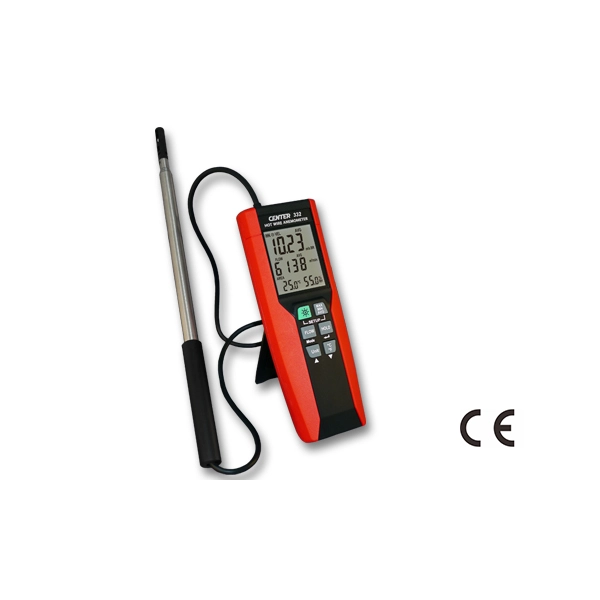The Role of an Anemometer in Improving Safety And Security for Outdoor Activities
The Role of an Anemometer in Improving Safety And Security for Outdoor Activities
Blog Article
Anemometers Revealed: Recognizing Their Relevance in Ecological Surveillance and Precaution
The role of anemometers in environmental monitoring and safety and security steps is often undervalued, yet their value is undeniable. From weather forecasting to air travel safety and security, anemometers play an essential role in providing exact information that notifies decision-making procedures and improves overall safety.
Background of Anemometers
The evolution of anemometers can be mapped back to the ancient civilizations where fundamental wind gauging devices were first used. One of the earliest well-known anemometers was the hemispherical mug anemometer developed by Leon Battista Alberti in the 15th century.
Over the years, developments in innovation led to the growth of more modern-day anemometers, consisting of ultrasonic anemometers and laser Doppler anemometers, using enhanced precision and efficiency in determining wind rate and instructions. The history of anemometers showcases an amazing trip of technology and progress in the field of weather forecasting.
Kinds Of Anemometers
Throughout the area of weather forecasting, various sorts of anemometers have been created to precisely determine wind rate and instructions. One of the most common type is the cup anemometer, which is composed of 3 or four cups mounted on straight arms that revolve with the wind. As the mugs spin, the rate at which they turn is directly symmetrical to the wind rate. One more widely made use of type is the vane anemometer, which features a tail or fin that straightens itself with the wind instructions. This alignment permits the tool to determine the wind instructions. Sonic anemometers utilize ultrasonic signals to gauge wind speed and instructions properly. They are frequently used in study applications as a result of their high accuracy. Hot-wire anemometers operate based upon the principle that the cooling effect of wind on a warmed cord is symmetrical to the wind rate. These anemometers are suitable for measuring reduced wind speeds with high accuracy. Each kind of anemometer has its strengths and is chosen based upon the specific demands of the monitoring task at hand.
Applications in Weather Forecasting
Having actually discussed the various kinds of anemometers used in weather forecasting for measuring wind rate and instructions, it is vital to discover their useful applications in the field. Anemometers play an important function in weather forecasting by providing precise and real-time data on wind conditions (anemometer). Meteorologists use anemometers to keep track of wind speed and instructions to anticipate climate patterns, concern warnings for extreme climate occasions like tornados, hurricanes, and storms, and analyze climatic conditions for aeronautics safety and security
In weather forecasting, anemometers help in understanding local and regional wind patterns, which are important for predicting climate modifications and determining weather fads. These gadgets are also utilized in research to study microclimates, city warm islands, and air pollution diffusion. In addition, anemometers are utilized in agriculture to optimize plant administration practices, such as irrigation and chemical application, based on wind conditions.
Importance in Aviation Security
An read the full info here integral aspect of ensuring aeronautics safety exists in the precise monitoring of wind problems utilizing anemometers. Anemometers play a critical duty in aeronautics by offering real-time data on wind rate and instructions, assisting pilots in making informed choices throughout liftoff, trip, and touchdown. Strong and uncertain winds can substantially influence airplane procedures, making it crucial for aeronautics authorities to rely upon accurate wind dimensions to guarantee the safety and security of travelers and team.

In the dynamic setting of aviation, where even minor modifications in wind rate and direction can have profound results, anemometers stand as important devices for advertising secure and risk-free flight.
Function in Environmental Study
How do anemometers contribute to developments in environmental study? Anemometers play a vital role in environmental research by offering vital information on wind speed and direction. This info is vital for recognizing different climatic procedures, such as air pollution dispersion, weather patterns, and climate modification. By accurately measuring wind attributes, anemometers help scientists assess the motion of contaminants airborne, analyze the impact of industrial emissions, and forecast the spread of impurities in the environment.


Verdict
In conclusion, anemometers have played a vital duty in ecological tracking and safety and security steps. Understanding the importance of anemometers is necessary for properly determining wind speed and direction, which is crucial for predicting climate patterns, ensuring secure check over here aeronautics procedures, and conducting ecological studies.
One of the earliest recognized anemometers was the hemispherical mug anemometer designed by Leon Battista Alberti in the 15th century. Over the years, advancements in modern technology led to the advancement of even more contemporary anemometers, consisting of ultrasonic anemometers and laser Doppler anemometers, offering raised accuracy and performance in gauging wind rate and instructions. Hot-wire anemometers operate based on the go to the website principle that the cooling result of wind on a warmed wire is proportional to the wind rate. Meteorologists make use of anemometers to check wind speed and instructions to forecast weather patterns, problem warnings for serious weather events like typhoons, storms, and twisters, and examine atmospheric conditions for aeronautics safety.
Comprehending the relevance of anemometers is essential for properly determining wind rate and instructions, which is important for anticipating weather condition patterns, guaranteeing risk-free aeronautics operations, and performing ecological research studies. (anemometer)
Report this page